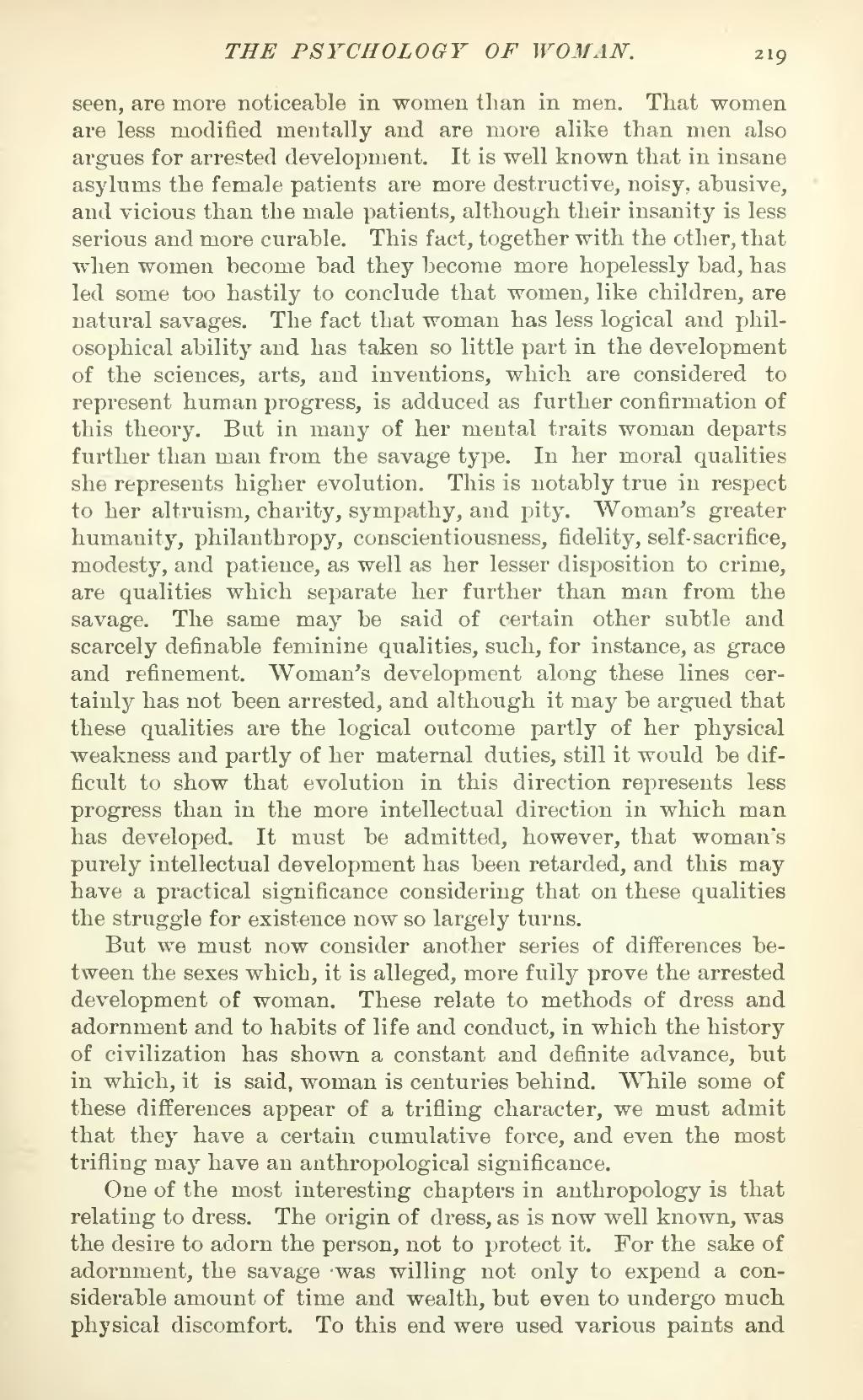seen, are more noticeable in women than in men. That women are less modified mentally and are more alike than men also argues for arrested development. It is well known that in insane asylums the female patients are more destructive, noisy, abusive, and vicious than the male patients, although their insanity is less serious and more curable. This fact, together with the other, that when women become bad they become more hopelessly bad, has led some too hastily to conclude that women, like children, are natural savages. The fact that woman has less logical and philosophical ability and has taken so little part in the development of the sciences, arts, and inventions, which are considered to represent human progress, is adduced as further confirmation of this theory. But in many of her mental traits woman departs further than man from the savage type. In her moral qualities she represents higher evolution. This is notably true in respect to her altruism, charity, sympathy, and pity. Woman's greater humanity, philanthropy, conscientiousness, fidelity, self-sacrifice, modesty, and patience, as well as her lesser disposition to crime, are qualities which separate her further than man from the savage. The same may be said of certain other subtle and scarcely definable feminine qualities, such, for instance, as grace and refinement. Woman's development along these lines certainly has not been arrested, and although it may be argued that these qualities are the logical outcome partly of her physical weakness and partly of her maternal duties, still it would be difficult to show that evolution in this direction represents less progress than in the more intellectual direction in which man has developed. It must be admitted, however, that woman's purely intellectual development has been retarded, and this may have a practical significance considering that on these qualities the struggle for existence now so largely turns.
But we must now consider another series of differences between the sexes which, it is alleged, more fully prove the arrested development of woman. These relate to methods of dress and adornment and to habits of life and conduct, in which the history of civilization has shown a constant and definite advance, but in which, it is said, woman is centuries behind. While some of these differences appear of a trifling character, we must admit that they have a certain cumulative force, and even the most trifling may have an anthropological significance.
One of the most interesting chapters in anthropology is that relating to dress. The origin of dress, as is now well known, was the desire to adorn the person, not to protect it. For the sake of adornment, the savage was willing not only to expend a considerable amount of time and wealth, but even to undergo much physical discomfort. To this end were used various paints and
